Artikel om Dandora soptipp: Le Monde 16 januari 2018
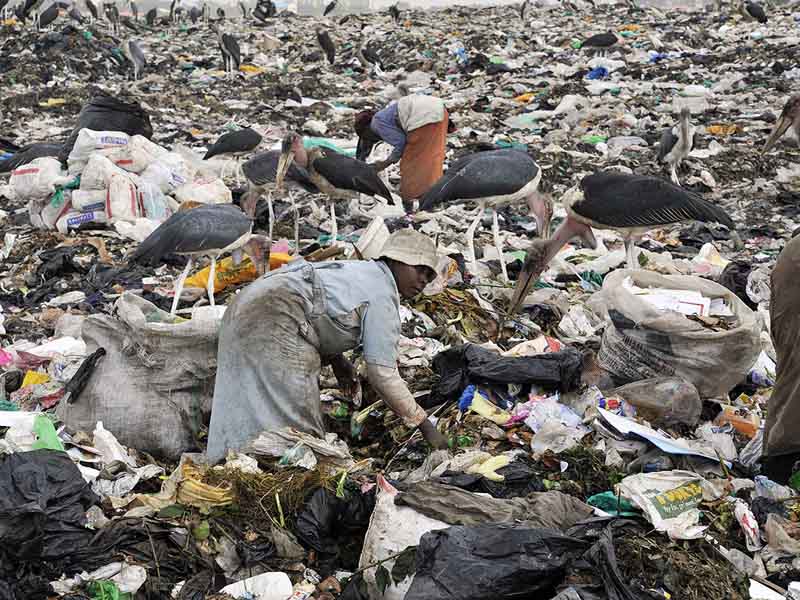
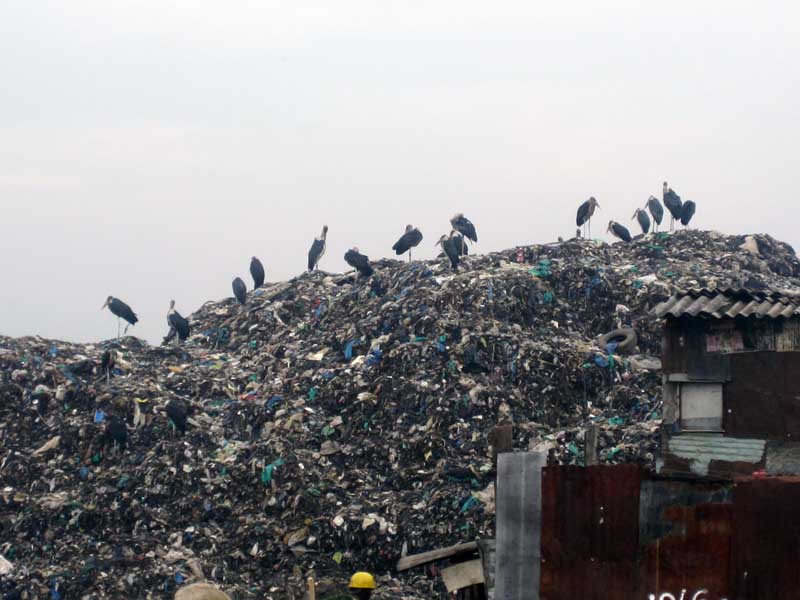
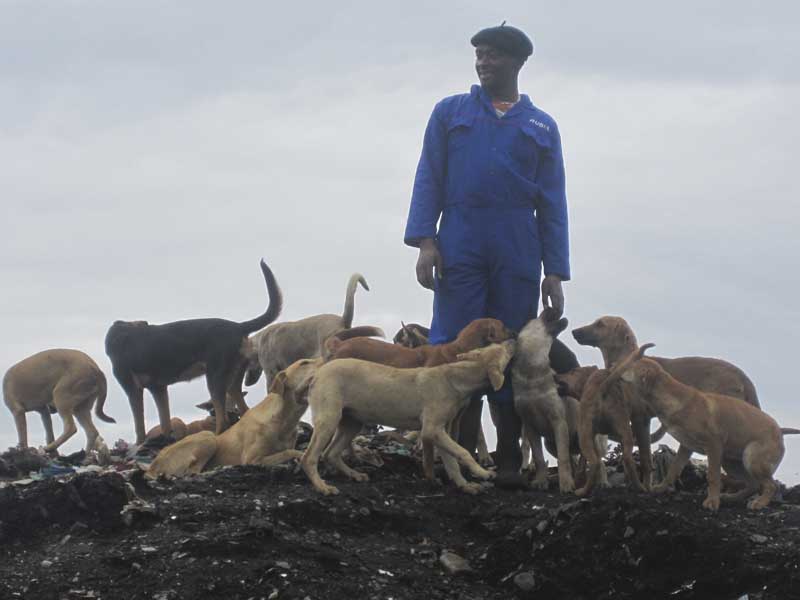
Stéphane Mandard – Le Monde 16 January 2018
Au Kenya, dans l’enfer de la décharge à ciel ouvert de Dandora
English translation: Sara Ollas
In Kenya, and in the hell of Dandora’s dumpsite
East of Nairobi, one of the largest landfills in Africa continues to grow despite the danger to the one million Kenyans living in the surrounding slums
The truck is just starting to dump its cargo. Pigs, cows, goats, men, women, children, rush through the garbage to recover what can be useful. And to eat. The smell of putrefaction gives nausea. But hunger is stronger. So they scratch, scrape, and lick the plastic trays. Rice grains, a piece of chicken or fish, a piece of cake … The remains of the meal trays served during flights to Nairobi lands here, in Dandora, one of the largest open dumps in Africa. At the gates of the capital of Kenya, it never stops to grow.
Every morning, a huge tavern arrives from the airport with the ”feast”. Throughout the day, dozens of others will also arrive with their tons of garbage. The marabouts, these great waders with a manner of scavenger, hover over this canyon of garbage which extends as far as the eye can see, and smoke can be seen in places under the effect of the decomposition of detritus. Death lurks in Dandora. But so does the survival instinct.
”When the truck arrives, the morning is a war,” says Zacharia. ”Sometimes we can not avoid fights between people.” Zacharia is 36 years old. For ten years, he has been the leader of the Jobless Millionaires (”unemployed millionaires”). With his ”gang”, he controls the ”zone 5” of the dump, the last and the most recent part.
Isabella, 30, is here too, ”to feed [her] family”. Crouching in the sun, she rubs shards of bottles (Guiness, Coca-Cola) with all her strength, with an aim to collect the capsules. Another woman sorts them on a tarpaulin spread on the ground. ”It’s hard work, but I have to make money,” says Isabella, with her 4-year-old daughter seated by her side. For each kilo of capsules she earns 3 shillings (less than 3 cents). Isabella is one of a million people into a crammed slum, that’s stretches around the dumpsite. Like her, they are hundreds to spend their day sorting: bottles, cans, paint cans, cans, cartons, glass …
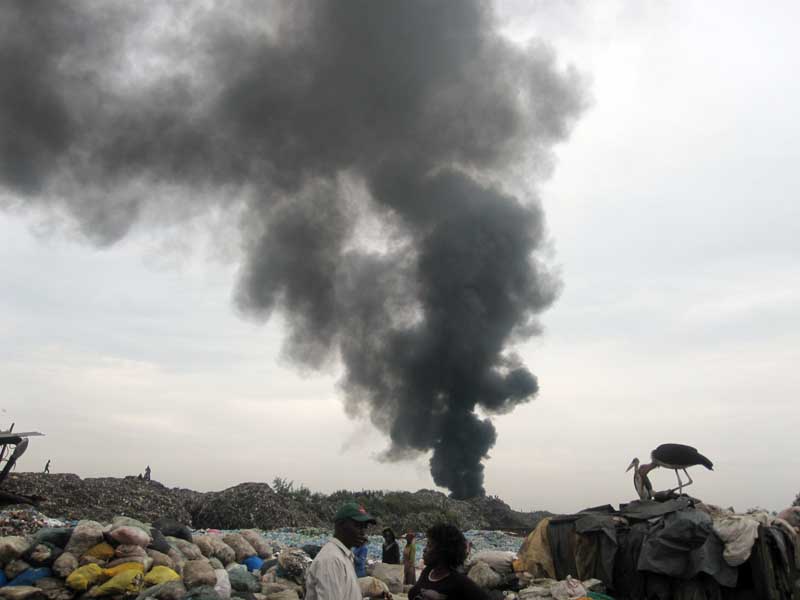
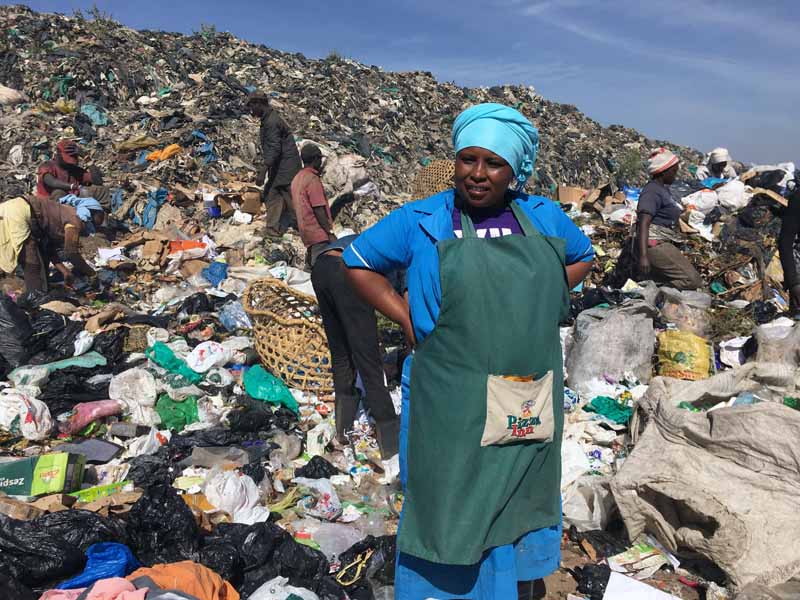

”It’s the only job there is here”
In the middle of huge white bags full to crack, an old man, with blond dreadlocks under his sailor’s cap, walks around with a pile of old newspapers under his arm. He collects them and sells them for a piece of bread, to garages who uses it to protect the windows and windshields of cars that’s to be re-painted. John is 65 years old, thirty of whom spent in Dandora. ”It’s the only job here,” he says with his broad, toothless smile. Further, a young woman is doing her laundry in the stagnant water of the ditch. She placed plastic bags on the garbage to dry the clothes in the sun. Like others, she lives here in a hut made of corrugated iron.
Opened in 1977, with funds from the World Bank, Dandora was to be an exemplary discharge. Forty years later, when the government declared it as ”full” and ”a serious health danger”, since 2001, it still continues to grow out of control in the outskirts of Nairobi, this ”capital of East Africa” whose population estimated at 8 million people (agglomeration included), that could jump to 12 million in 2030. ”All the garbage comes from rich people, from the west of the city, less than 10 kilometers from here,” says Zacharia, the ”unemployed millionaire”. More than 2,500 tons of waste (household, industrial, agricultural or medical) are deposited every day on these 30 hectares. Result: the mini-football field that once were, is now covered with bottles; Dandora borders homes and schools; the tide of rubbish spreads for hundreds of meters along the road where merchants re-sells stuffed animals, shoes, ballets, pipes, and electrical cables that’s recovered from the landfill.
The smell and smoke do not stop at the boundaries of the dump. They penetrate and permeate ”the ghetto,” as Jack calls it. Unlike Zacharia, he has never worked here. But, at 23, he has always lived in Dandora, where he has set up an association for teenagers. ”Everyone has red eyes,” he says, pointing to his own. In the morning the air is unbreathable, because some garbage is burned at night. On rainy days, it creates a smog that sometimes forces schools to evacuate classes. Jack did the math: knowing that ”one classroom can accommodate up to one hundred students,” about 10,000 children are exposed to the toxic gases.
Excessive concentrations of lead in the blood
The danger of this landfill has been documented for ten years. In October 2007, the United Nations Environment Program (UNEP), located less than 10 kilometers away, published an alarming study. Examinations were carried out on 328 children aged 2 to 18, living around the site. For the majority of them, the analyzes revealed excessive levels of lead in the blood and chronic respiratory diseases. Soil and water expertise showed, in addition to lead levels up to ten times higher than unpolluted sites, the significant presence of mercury and cadmium. As many heavy metals whose toxicity can cause damage to the nervous system and brain, and cause cancer.
The study also showed contamination of the Nairobi River, adjacent to the landfill. In rainy weather, torrents form in the Dandora Canyon and carry waste and toxic products to the river. The entire food chain is affected. Decaying waste is used (or sold) as compost to grow vegetables or feed animals for consumption, including Nairobians not living near the site. These results, ”even more shocking than what [they] had originally imagined”, words of the UNEP director at that time, and was ”called for immediate action to prevent chronic overexposure of humans of environmental pollution”.
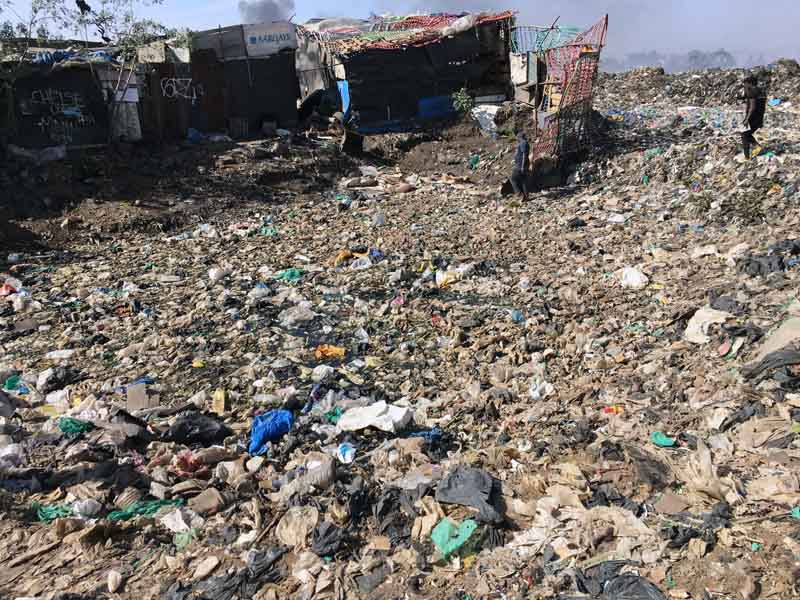
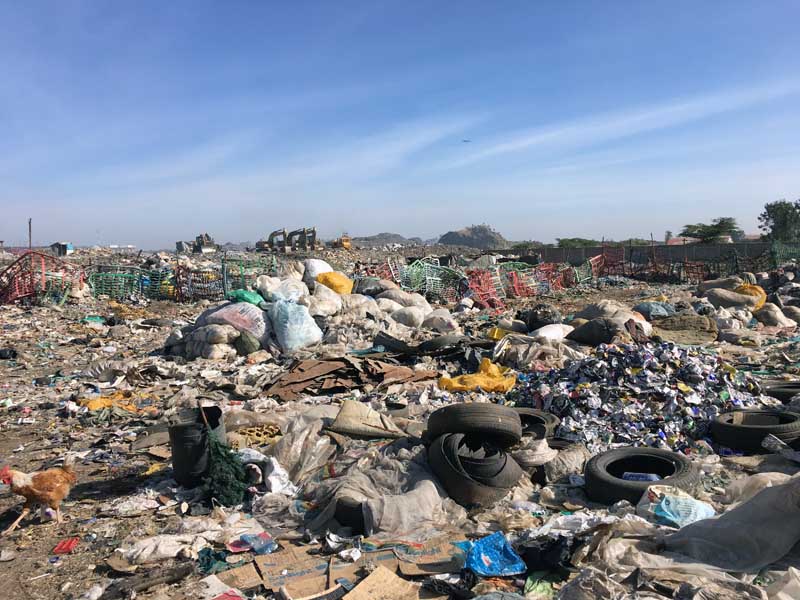
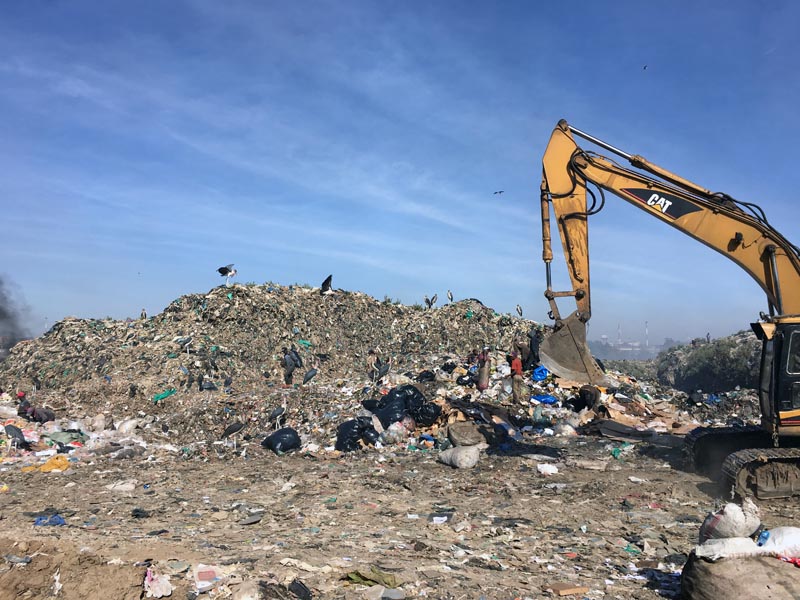
”End the corruption”
Following the UNEP report, the Ministry of the Environment had announced that the landfill should be ”shut down” and transferred ”within two years” to another site, better adapted, a little more distaned is from the capital, and was assured without irony that Dandora ”could be used for leisure.” After years of discussion between the government and the Nairobi City Hall, the project was definitely buried in 2014. Official motive: the veto of civil aviation and airport authorities, and their fears that the marabouts, attracted by garbage, do not represent a danger for flights.
In December the new governor of Nairobi, Mike Sonko, announced that he planned to install ”a giant recycling plant” in Dandora. No more question of closing it. What worries him the most is how the waste is deposited savagely in the streets of the capital. With his Sonko Rescue Teams in red outfit, he multiplies the cleaning operations in the city. A few weeks ago, he cleared an entrance to the garbage dump so trucks could continue to carry their cargoes there. Mike Sonko did not respond to requests from Le Monde.
The governor, whose name means ”the boss” or ”rich guy,” has a sulphurous reputation. Very popular among the most deprived, he made his fortune with the ”matatus”. These minibuses that clog the city. He is suspected to have been involved in other trafficking, including drugs, which he has always denied. During his campaign last summer, he promised ”clean water” and ”put an end to corruption”.
Corruption. For Jack, this is the first explanation for the inaction of the authorities. ”Dandora is a big, big business,” says Zacharia, who claims to earn about 300 shillings (2.40 euros) a day. The gang leader says that ”competition is very tough” , between the dozen intermediaries organizing the resale of waste sorted on the landfill.

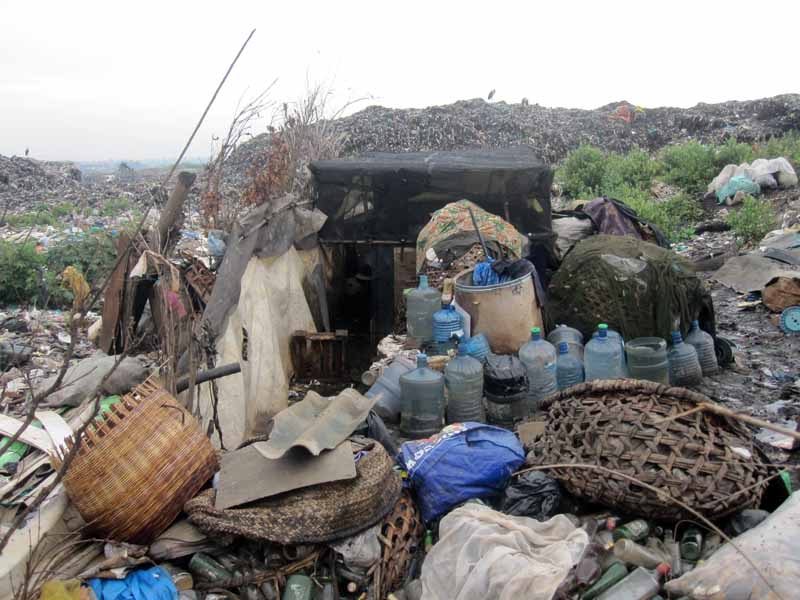
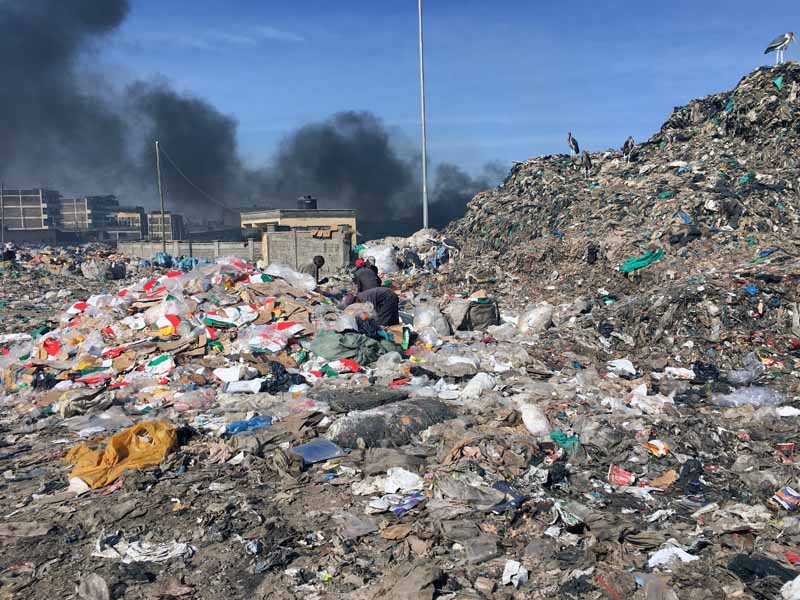
The hunt between the gangs
A new truck filled with garbage arrives on his area. ”Trust us, the business is theirs,” say Jack and Zacharia. ”They belong to prominent politicians in Nairobi.”
Who? ”No names, very powerful people …” . ”Only one politician has dared to denounce this situation. He was killed” says Jack. His name was Melitus Mugabe Were. Born in Dandora, and a defender of slum dwellers in the Nairobi City Council. He was murdered on January 29, 2008, a month after his election to the parliament.
”In August 2014, two members of a gang threatened me with firearms,” says an active supporter of the closure of the site. ”They told me that if I did not stop, I would pay for it with my life”.
If Dandora slowly kills by poisoning the air, water and soil, it also bring fuel to criminality. ”The rivalry between the gangs is strong,” admits Zacharia, the leader of the Jobless Millionaires, while omitting to mention that he is making deaths. Each zone has its own gang. ”The police do not dare to go there any more”, says Jack. Many of the childhood friends are dead. Here, there is not a day without a youth being killed. Often for stories of theft, often killed by the police. Jack also talks about rape, prostitution, and drugs to describe the ghetto’s everyday life.
”Most young people feel ashamed to live here”. To offer them an alternative to garbage and crime, Jack 2016 created the organisation Mtoto wa Dandora (”Children of Dandora”): the name is painted in yellow letters on a sky blue facade of a sheet metal construction, in the heart of the slum. The ”programs” are also listed at the entrance: ”arts and music”, ”education”, ”environment”, ”sports”, ”girl empowerment” … Inside is a wooden table (used for support schoolstudies or drawing) that you have to push aside to create a space for dance or drama classes, and some old footballs (the other big part of Jack, Dandora Youth Football Club team player, the pride of the ghetto) .
A hundred children, ”from age 5 to 13, after it’s too late,” attend the association diligently. A dozen could extricate themselves from the slum for a month, in September. Thanks to the support of the Swedish NGO Globetree – the funder of the structure – they went on stage to tell about their life in Dandora, during a tour of schools in Stockholm and its suburbs. ”A dream” that Jack plans to reissue in 2018.
On his mountain of garbage, Zacharia ”the millionaire” also feeds a dream: ”Leave this place and start my own business”. While waiting for the idea and the money to come up, he has a request: ”Do not finish your meal when your flying”. In the flight back to Paris, we did not touch the tray.